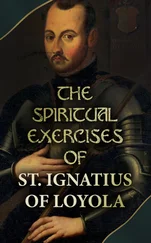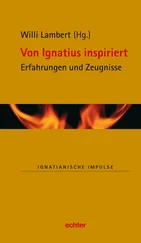Ignatius Donnelly - Antediluvian world
Здесь есть возможность читать онлайн «Ignatius Donnelly - Antediluvian world» весь текст электронной книги совершенно бесплатно (целиком полную версию без сокращений). В некоторых случаях можно слушать аудио, скачать через торрент в формате fb2 и присутствует краткое содержание. Жанр: Старинная литература, на русском языке. Описание произведения, (предисловие) а так же отзывы посетителей доступны на портале библиотеки ЛибКат.
- Название:Antediluvian world
- Автор:
- Жанр:
- Год:неизвестен
- ISBN:нет данных
- Рейтинг книги:5 / 5. Голосов: 1
-
Избранное:Добавить в избранное
- Отзывы:
-
Ваша оценка:
- 100
- 1
- 2
- 3
- 4
- 5
Antediluvian world: краткое содержание, описание и аннотация
Предлагаем к чтению аннотацию, описание, краткое содержание или предисловие (зависит от того, что написал сам автор книги «Antediluvian world»). Если вы не нашли необходимую информацию о книге — напишите в комментариях, мы постараемся отыскать её.
Antediluvian world — читать онлайн бесплатно полную книгу (весь текст) целиком
Ниже представлен текст книги, разбитый по страницам. Система сохранения места последней прочитанной страницы, позволяет с удобством читать онлайн бесплатно книгу «Antediluvian world», без необходимости каждый раз заново искать на чём Вы остановились. Поставьте закладку, и сможете в любой момент перейти на страницу, на которой закончили чтение.
Интервал:
Закладка:
The witches of Scandinavia, who produced tempests by their incantations, are duplicated in America. A Cree sorcerer sold three days of fair weather for one pound of tobacco! The Indian sorcerers around Freshwater Bay kept the winds in leather bags, and disposed of them as they pleased.
Among the American Indians it is believed that those who are insane or epileptic are “possessed of devils.” (Tylor, “Prim. Cult.,” vol. ii., pp. 123-126.) Sickness is caused by evil spirits entering into the sick person. (Eastman’s “Sioux.”) The spirits of animals are much feared, and their departure out of the body of the invalid is a cause of thanksgiving. Thus an Omaha, after an eructation, says, “Thank you, animal.” (Dorman, “Prim. Superst.,” p. 55.) The confession of their sins was with a view to satisfy the evil spirit and induce him to leave them.
(Ibid., p. 57.)
In both continents burnt-offerings were sacrificed to the gods. In both continents the priests divined the future from the condition of the internal organs of the man or animal sacrificed. (Ibid., pp. 214, 226.) In both continents the future was revealed by the flight of birds and by dreams. In Peru and Mexico there were colleges of augurs, as in Rome, who practised divination by watching the movements and songs of birds.
(Ibid., p. 261.)
Animals were worshipped in Central America and on the banks of the Nile.
(Ibid., p. 259.)
The Ojibbeways believed that the barking of a fox was ominous of ill.
(Ibid., p. 225). The peasantry of Western Europe have the same belief as to the howling of a dog.
The belief in satyrs, and other creatures half man and half animal, survived in America. The Kickapoos are Darwinians. “They think their ancestors had tails, and when they lost them the impudent fox sent every morning to ask how their tails were, and the bear shook his fat sides at the joke.” (Ibid., p. 232.) Among the natives of Brazil the father cut a stick at the wedding of his daughter; “this was done to cut off the tails of any future grandchildren.” (Tylor, vol. i., p. 384.) Jove, with the thunder-bolts in his hand, is duplicated in the Mexican god of thunder, Mixcoatl, who is represented holding a bundle of arrows.
“He rode upon a tornado, and scattered the lightnings.” (Dorman, “Prim.
Superst.,” p. 98.)
Dionysus, or Bacchus, is represented by the Mexican god Texcatzoncatl, the god of wine. (Bancroft, vol. iii., p. 418.) Atlas reappears in Chibchacum, the deity of the Chibchas; he bears the world on his shoulders, and when be shifts the burden from one shoulder to another severe earthquakes are produced. (Bollaert, pp. 12, 13.) Deucalion repeopling the world is repeated in Xololt, who, after the destruction of the world, descended to Mictlan, the realm of the dead, and brought thence a bone of the perished race. This, sprinkled with blood, grew into a youth, the father of the present race. The Quiche hero-gods, Hunaphu and Xblanque, died; their bodies were burnt, their bones ground to powder and thrown into the waters, whereupon they changed into handsome youths, with the same features as before. (Dorman, “Prim. Superst.,” p. 193.)
Witches and warlocks, mermaids and mermen, are part of the mythology of the American tribes, as they were of the European races. (Ibid., p. 79.) The mermaid of the Ottawas was “woman to the waist and fair;” thence fish-like. (Ibid., p. 278.)
The snake-locks of Medusa are represented in the snake-locks of At-otarho, an ancient culture-hero of the Iroquois.
A belief in the incarnation of gods in men, and the physical translation of heroes to heaven, is part of the mythology of the Hindoos and the American races. Hiawatha, we are told, rose to heaven in the presence of the multitude, and vanished from sight in the midst of sweet music.
The vocal statues and oracles of Egypt and Greece were duplicated in America. In Peru, in the valley of Rimac, there was an idol which answered questions and became famous as an oracle. (Dorman, “Prim.
Superst.,” p. 124.)
The Peruvians believed that men were sometimes metamorphosed into stones.
The Oneidas claimed descent from a stone, as the Greeks from the stones of Deucalion. (Ibid., p. 132.)
Witchcraft is an article of faith among all the American races. Among the Illinois Indians “they made small images to represent those whose days they have a mind to shorten, and which they stab to the heart,”
whereupon the person represented is expected to die. (Charlevoix, vol.
ii., p. 166.) The witches of Europe made figures of wax of their enemies, and gradually melted them at the fire, and as they diminished the victim was supposed to sicken and die.
A writer in the Popular Science Monthly (April, 1881, p. 828) points out the fact that there is an absolute identity between the folk-lore of the negroes on the plantations of the South and the myths and stories of certain tribes of Indians in South America, as revealed by Mr. Herbert Smith’s “Brazil, the Amazons, and the Coast.” (New York: Scribner, 1879.) Mr. Harris, the author of a work on the folk-lore of the negroes, asks this question, “When did the negro or the North American Indian come in contact with the tribes of South America?”
Customs.—Both peoples manufactured a fermented, intoxicating drink, the one deriving it from barley, the other from maize. Both drank toasts.
Both had the institution of marriage, an important part of the ceremony consisting in the joining of hands; both recognized divorce, and the Peruvians and Mexicans established special courts to decide cases of this kind. Both the Americans and Europeans erected arches, and had triumphal processions for their victorious kings, and both strewed the ground before them with leaves and flowers. Both celebrated important events with bonfires and illuminations; both used banners, both invoked blessings. The Phoenicians, Hebrews, and Egyptians practised circumcision. Palacio relates that at Azori, in Honduras, the natives circumcised boys before an idol called Icelca. (“Carta,” p. 84.) Lord Kingsborough tells us the Central Americans used the same rite, and McKenzie (quoted by Retzius) says he saw the ceremony performed by the Chippeways. Both had bards and minstrels, who on great festivals sung the deeds of kings and heroes. Both the Egyptians and the Peruvians held agricultural fairs; both took a census of the people. Among both the land was divided per capita among the people; in Judea a new division was made every fifty years. The Peruvians renewed every year all the fires of the kingdom from the Temple of the Sun, the new fire being kindled from concave mirrors by the sun’s rays. The Romans under Numa had precisely the same custom. The Peruvians had theatrical plays. They chewed the leaves of the coca mixed with lime, as the Hindoo to-day chews the leaves of the betel mixed with lime. Both the American and European nations were divided into castes; both practised planet-worship; both used scales and weights and mirrors. The Peruvians, Egyptians, and Chaldeans divided the year into twelve months, and the months into lesser divisions of weeks. Both inserted additional days, so as to give the year three hundred and sixty-five days. The Mexicans added five intercalary days; and the Egyptians, in the time of Amunoph I., had already the same practice.
Humboldt, whose high authority cannot be questioned, by an elaborate discussion (“Vues des Cordilleras,” p. 148 et. seq., ed. 1870), has shown the relative likeness of the Nahua calendar to that of Asia. He cites the fact that the Chinese, Japanese, Calmucks, Mongols, Mantchou, and other hordes of Tartars have cycles of sixty years’ duration, divided into five brief periods of twelve years each. The method of citing a date by means of signs and numbers is quite similar with Asiatics and Mexicans. He further shows satisfactorily that the majority of the names of the twenty days employed by the Aztecs are those of a zodiac used since the most remote antiquity among the peoples of Eastern Asia.
Читать дальшеИнтервал:
Закладка:
Похожие книги на «Antediluvian world»
Представляем Вашему вниманию похожие книги на «Antediluvian world» списком для выбора. Мы отобрали схожую по названию и смыслу литературу в надежде предоставить читателям больше вариантов отыскать новые, интересные, ещё непрочитанные произведения.
Обсуждение, отзывы о книге «Antediluvian world» и просто собственные мнения читателей. Оставьте ваши комментарии, напишите, что Вы думаете о произведении, его смысле или главных героях. Укажите что конкретно понравилось, а что нет, и почему Вы так считаете.












